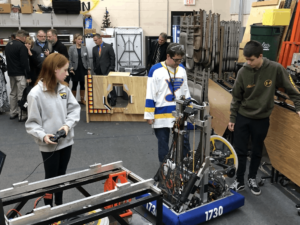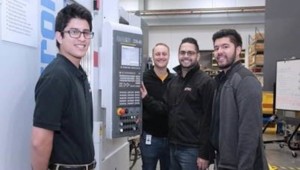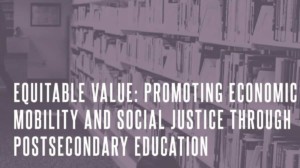Boosting Employability

This week I spoke with two groups planning to attack the employability problem–one in the U.S. and one in Africa. Both cite recent stats that 40% of recent grads are unemployed–in both places.
So, who owns the problem? Is it a government problem, a higher ed problem, a consumer problem, or an employer problem? To some extent, it’s all of the above. The high level of unemployment is a complicated mixture of economic malaises, a big technical skills gap, and weak basic employability among a large percentage of recent grads.
Companies desperately need more job ready employees. The roughly 3 million unfilled technical jobs suggests that there is a big technical skills gap. The best examples of folks filling the technical skills gap include:
-
The university most plugged in to this need (that I’ve seen lately) is Milwaukee School of Engineering: An Example of Education for Employability. A job placement rate of 95%, high even for an engineering schools, reflects the MSOE commitment to active and applied learning connected to active job clusters. Like the best community colleges, MSOE has industry advisory groups for each degree program that help create high relevance, produce internships, and create prepared graduates.
-
Career Path High, opening next month in Utah, will allow students to earn a high school diploma, job certification in a technical field, and college credit up to an AA degree. Located at a top notch applied technical school north of Salt Lake
A recent Business Council survey confirms that CEOs Want Hard-Working Decision-Making Team Players. The priority on soft skills (what Conley calls metacognative skills) is clear. Interestingly, work ethic is the clear winner. The next four priorities describe the setting–teamwork, decision making, critical thinking, and computer literacy. Some of high schools are doing great work on the ‘metaskills’ include:
-
Summit Denali will be an engaging student-centered high school. The Summit team is measuring habits of success and work experiences as well as academic progress toward college and career readiness.
-
DSST, Great Hearts, and Eagle Prep are all committed to The Missing Core of K-12 –character development rooted in a sense of purpose. They graduate self-motivated students that produce high quality work product.
Some community colleges promote work experiences that may boost grit and work ethic but I don’t know of any baccalaureate programs that incorporate these core work readiness skills into their mission.
Solutions. Entrepreneurs thinking about employability solutions can consider three entry points:
-
Consumer. Work readiness bootcamps like Fullbridge are a better-late-than-never solution. A work-ready certificate could boost a college grads market signaling efforts.
-
Corporate. Many companies provide internship opportunities to give young people some work experience and test drive potential hires (and get some free help); but it’s a bad racket–kids hate working for free and companies think it’s a big hassle. Improving internships for kids and companies would be big win.
-
Secondary & PostSec. Most high schools and colleges could do a better job of building employability skills–and use it as a differentiator.
College degrees are generally inadequate job preparation. They are losing market signaling value–especially in dynamic job clusters. There is entrepreneurial opportunity in boosting employability and improved market signaling.








Paul Caliandro
I respond as a parent and entrepreneur. The problem is huge and belongs to a variety of stakeholders including students, parents, educators, governing bodies and the employers. Affecting the kind of change that is required to make systemic differences is nothing short of daunting, but let's not try to boil the ocean. I do believe as the author does that incremental changes are possible. Some are happening already.
I begin by shinning the spotlight on the Rivers and Revolutions program at the Concord-Carlisle High School in Concord, MA. It is a semester program that was piloted with great success with the senior class of 2013. What the program did was to combine academic skills with the practical. Students might study certain mathematical topics in the morning and then take those skills into the field and calculate the surface area of a section of a stream in the afternoon. Many of these exercises were designed for teams. Now imagine if local companies provided further opportunities to translate the abstract to practical.
As an entrepreneur and parent I want even more. The shortage of programmers is acute even in the Boston area where I live. So, what I want to see are more partnerships between employers and educators. The employers can not only influence what courses are offered, but provide the opportunity for students to apply those skills and maybe the resources to get these programs off the ground. It could be that the standards are modified so java script or ruby on rails can satisfy the language requirement or are part of the core curriculum.
My response is clearly focused on the secondary. That is not by accident. Waiting until our students are in college to develop practical skills, assuming that's the path they choose, is too late. In regards to paths, as a society we should take lessons from the German vocational model which is very effective at churning out highly qualified workers.
Replies
Tom Vander Ark
Thanks Paul. The R&R program sounds great. And, yes, we need to focus on employability in high school.